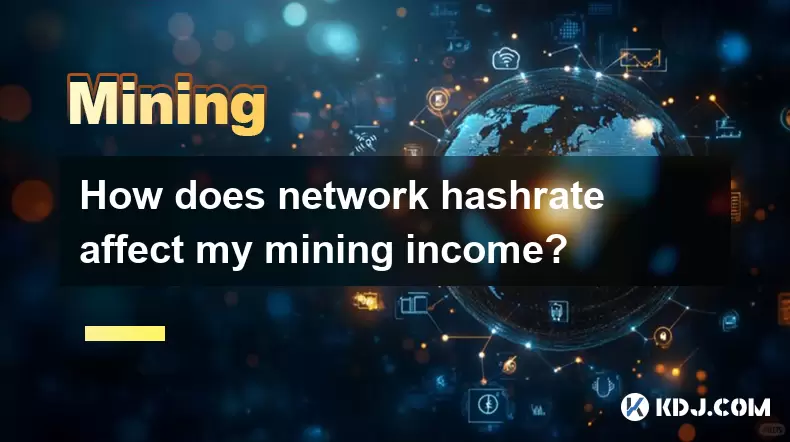-
 Bitcoin
Bitcoin $119,448.2396
0.27% -
 Ethereum
Ethereum $2,992.9919
0.78% -
 XRP
XRP $2.9074
1.58% -
 Tether USDt
Tether USDt $1.0001
0.00% -
 BNB
BNB $687.9097
-0.40% -
 Solana
Solana $161.5804
-0.47% -
 USDC
USDC $0.9998
0.01% -
 Dogecoin
Dogecoin $0.1948
-2.10% -
 TRON
TRON $0.3013
-0.08% -
 Cardano
Cardano $0.7286
-3.16% -
 Hyperliquid
Hyperliquid $47.3153
-3.81% -
 Stellar
Stellar $0.4543
-9.79% -
 Sui
Sui $3.8809
5.63% -
 Chainlink
Chainlink $15.6262
-0.55% -
 Hedera
Hedera $0.2368
-5.31% -
 Bitcoin Cash
Bitcoin Cash $501.2030
-0.80% -
 Avalanche
Avalanche $21.0650
-1.43% -
 UNUS SED LEO
UNUS SED LEO $9.0006
-0.39% -
 Shiba Inu
Shiba Inu $0.0...01310
-1.90% -
 Toncoin
Toncoin $3.0040
1.56% -
 Litecoin
Litecoin $93.8936
-1.20% -
 Monero
Monero $341.8918
1.27% -
 Polkadot
Polkadot $3.9087
-3.05% -
 Uniswap
Uniswap $8.9599
4.78% -
 Dai
Dai $0.9999
0.02% -
 Ethena USDe
Ethena USDe $1.0005
-0.02% -
 Bitget Token
Bitget Token $4.3954
-0.14% -
 Pepe
Pepe $0.0...01207
-2.26% -
 Aave
Aave $314.5223
1.72% -
 Bittensor
Bittensor $408.6988
2.76%
How does network hashrate affect my mining income?
A higher network hashrate increases mining difficulty, reducing individual rewards unless you upgrade hardware or join a pool.
Jul 13, 2025 at 06:14 pm

Understanding Network Hashrate
Network hashrate refers to the total computational power being used by miners on a blockchain network to solve cryptographic puzzles and validate transactions. It is measured in hashes per second (H/s), kilohashes per second (KH/s), megahashes per second (MH/s), gigahashes per second (GH/s), terahashes per second (TH/s), or even petahashes per second (PH/s), depending on the scale of the network.
In Proof-of-Work (PoW) blockchains like Bitcoin, Ethereum Classic, Litecoin, and others, the network hashrate determines how quickly blocks are mined and how secure the network is against attacks. A higher hashrate means more miners are contributing processing power, which increases the difficulty of mining new blocks.
The Relationship Between Network Hashrate and Mining Difficulty
When network hashrate increases, the blockchain protocol automatically adjusts the mining difficulty to maintain a consistent block time. For example, Bitcoin targets a block time of approximately 10 minutes. If the hashrate rises significantly, the network responds by increasing the difficulty level so that blocks aren’t mined too quickly.
This adjustment directly affects individual miners because it makes each hash they compute less likely to result in a successful block find. As a result, miners with fixed computing power may see their earnings decrease if the overall network hashrate goes up without an increase in their own hashing capacity.
How Network Hashrate Impacts Mining Income
Your mining income depends on several factors:
- The hashrate of your mining rig
- The total network hashrate
- The block reward for successfully mining a block
- The current price of the cryptocurrency
- The difficulty level of the network
If the network hashrate increases, your share of the total computational power decreases proportionally unless you add more hardware. Since rewards are distributed based on the probability of finding a block, a lower share of the total hashrate means lower chances of earning block rewards, thus reducing your income.
For example, if your mining rig contributes 1 TH/s to a network with a total hashrate of 100 TH/s, you have a 1% chance of mining each block. But if the network hashrate jumps to 200 TH/s, your share drops to 0.5%, cutting your expected income in half unless difficulty adjustments compensate or you increase your own hashrate.
Impact of Pool Mining vs Solo Mining
Miners often choose between solo mining and pool mining to optimize income stability.
In solo mining, you only earn rewards when you personally mine a block. This method becomes increasingly impractical as network hashrate grows, since the odds of solving a block become very low unless you have massive computational resources.
In pool mining, multiple miners combine their hashrates to increase the probability of solving blocks. Rewards are then shared among pool members based on contributed hashpower. When network hashrate increases, pool mining helps mitigate income volatility because the combined effort still maintains a reasonable chance of earning rewards regularly.
However, pool fees and payout structures can affect net income. Always compare pool fees, minimum payout thresholds, and hashrate reporting accuracy before choosing a mining pool.
Practical Steps to Monitor and Adapt to Network Hashrate Changes
To maximize your mining income in response to changes in network hashrate, follow these steps:
- Monitor real-time hashrate data using platforms like Blockchain.com, Etherscan, or CoinWarz to track trends.
- Use mining profitability calculators that factor in current hashrate, difficulty, and coin prices to estimate potential earnings.
- Consider upgrading your mining hardware if the network hashrate surge makes your equipment inefficient.
- Switch coins or algorithms if a particular network becomes too competitive and reduces your income significantly.
- Join a reputable mining pool with low fees and stable payouts to maintain steady income despite rising network hashrate.
Regularly reviewing these metrics ensures you stay informed and can adapt your mining strategy effectively.
Frequently Asked Questions
Q: Can I predict future network hashrate changes?
A: While exact predictions are difficult, analyzing historical data, market trends, and miner behavior can help anticipate general directions. Tools like BitInfoCharts provide visualizations of past hashrate fluctuations.
Q: Does a drop in network hashrate increase my mining income?
A: Yes, temporarily. If the network hashrate decreases, the mining difficulty remains high until the next adjustment, giving existing miners a higher chance to earn rewards. However, this situation usually corrects itself after the difficulty readjustment.
Q: How often does the mining difficulty adjust with changing network hashrate?
A: In Bitcoin, difficulty adjusts every 2016 blocks (approximately every two weeks). Other cryptocurrencies may have different intervals — for example, Ethereum adjusted its difficulty dynamically during its PoW phase.
Q: Is mining profitable if network hashrate keeps increasing?
A: Profitability depends on your hashrate relative to the network, electricity costs, and hardware efficiency. Rising network hashrate typically lowers individual earnings unless compensated by better hardware, cheaper energy, or increased cryptocurrency prices.
Disclaimer:info@kdj.com
The information provided is not trading advice. kdj.com does not assume any responsibility for any investments made based on the information provided in this article. Cryptocurrencies are highly volatile and it is highly recommended that you invest with caution after thorough research!
If you believe that the content used on this website infringes your copyright, please contact us immediately (info@kdj.com) and we will delete it promptly.
- TAC Mainnet & Native Token Launch: A New Era for Telegram?
- 2025-07-15 18:50:12
- Ripple's RLUSD Stablecoin Eyes EU Expansion: Luxembourg Launch Under MiCA
- 2025-07-15 18:50:12
- Whales, DeFi Tokens, and DOGE: A New Era of Crypto Investments?
- 2025-07-15 19:10:12
- Bitcoin Yield Takes Center Stage: Function's $10M Raise & Galaxy Digital's Bet
- 2025-07-15 19:10:12
- ERC-20 Tokens & Ethereum Treasuries: GameSquare's Bold Move
- 2025-07-15 19:15:12
- ICO, BlockchainFX, Crypto Investment: The Buzz in the Big Apple
- 2025-07-15 19:15:12
Related knowledge

How are crypto mining profits taxed?
Jul 14,2025 at 12:28am
Understanding Cryptocurrency Mining and TaxationCryptocurrency mining involves validating transactions on a blockchain network and earning rewards in ...

How to keep a mining rig cool
Jul 12,2025 at 01:42pm
Understanding the Importance of Cooling in Mining RigsCryptocurrency mining is an intensive process that places heavy demand on hardware components, p...

How much does it cost to start crypto mining?
Jul 13,2025 at 12:22am
Understanding the Basic Costs of Crypto MiningStarting crypto mining involves several upfront and ongoing expenses. The primary costs include hardware...

What is the most profitable crypto to mine?
Jul 13,2025 at 07:00am
Understanding Mining Profitability in CryptocurrencyWhen evaluating the most profitable crypto to mine, it's essential to consider several factors tha...

What do I need to start mining crypto?
Jul 13,2025 at 12:28am
Understanding the Basics of Crypto MiningCrypto mining is the process by which transactions are verified and added to a blockchain, and new coins are ...

How does crypto mining work?
Jul 13,2025 at 11:01am
Understanding the Basics of Crypto MiningCrypto mining is the process through which new cryptocurrency coins are introduced into circulation and trans...

How are crypto mining profits taxed?
Jul 14,2025 at 12:28am
Understanding Cryptocurrency Mining and TaxationCryptocurrency mining involves validating transactions on a blockchain network and earning rewards in ...

How to keep a mining rig cool
Jul 12,2025 at 01:42pm
Understanding the Importance of Cooling in Mining RigsCryptocurrency mining is an intensive process that places heavy demand on hardware components, p...

How much does it cost to start crypto mining?
Jul 13,2025 at 12:22am
Understanding the Basic Costs of Crypto MiningStarting crypto mining involves several upfront and ongoing expenses. The primary costs include hardware...

What is the most profitable crypto to mine?
Jul 13,2025 at 07:00am
Understanding Mining Profitability in CryptocurrencyWhen evaluating the most profitable crypto to mine, it's essential to consider several factors tha...

What do I need to start mining crypto?
Jul 13,2025 at 12:28am
Understanding the Basics of Crypto MiningCrypto mining is the process by which transactions are verified and added to a blockchain, and new coins are ...

How does crypto mining work?
Jul 13,2025 at 11:01am
Understanding the Basics of Crypto MiningCrypto mining is the process through which new cryptocurrency coins are introduced into circulation and trans...
See all articles

























































































